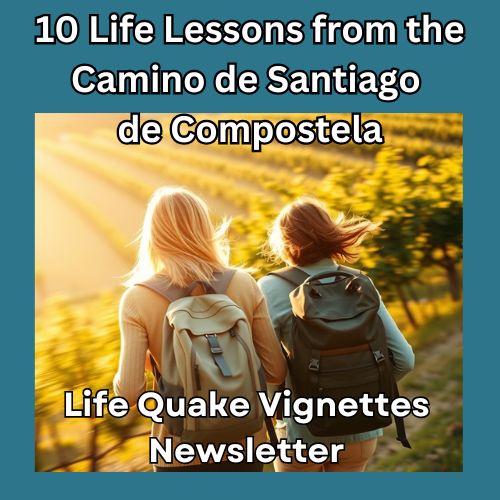Summary
To be yourself at work isn’t about showing up in your pyjamas or sharing every personal detail with colleagues. It’s about finding the sweet spot between professional competence and authentic expression—bringing your genuine strengths, values, and personality into your work while respecting workplace boundaries. This delicate balance can transform not just your job satisfaction, but your entire relationship with success, creativity, and professional growth.
Introduction
Picture this: You’re sitting in yet another Monday morning meeting, nodding along to ideas that make your soul shrivel, wearing a metaphorical mask that’s become so familiar you’ve forgotten what your real face looks like underneath. Sound familiar?
The modern workplace has become a theatre where millions of us perform daily, playing characters we think we should be rather than embracing who we actually are. But what if the very thing we’re hiding—our authentic selves—is exactly what could make us most successful, fulfilled, and genuinely valuable to our organisations?
The question “What does it mean to be yourself at work?” isn’t just about workplace philosophy. It’s about reclaiming a fundamental part of your humanity that gets lost somewhere between the job description and the performance review.
Ella’s Story: The Great Unmasking
The fluorescent lights hummed their familiar tune as Ella McGinthy straightened her charcoal blazer and checked her reflection in the elevator’s polished steel doors. At thirty-four, she had perfected the art of corporate camouflage. Her real laugh—the one that snorted slightly at the end—had been replaced by a polite chuckle. Her natural tendency to gesture wildly when excited was now contained within a three-inch radius of her torso. Even her handwriting had become smaller, more controlled, as if taking up less space on the page might help her blend in better.
Ella worked at Morrison & Associates, a mid-sized consulting firm where beige seemed to be both the dominant colour scheme and the prevailing personality type. She’d been there for seven years, climbing steadily but never quite feeling like she belonged. The coffee always tasted slightly burnt, like disappointment in a paper cup, and the air carried that peculiar blend of printer toner and suppressed dreams that seems to permeate corporate buildings worldwide.
That Tuesday started like any other. Ella sat through the weekly strategy meeting, watching her colleague Brad present her idea about client retention—the same idea she’d whispered to him by the water cooler the previous week, the one he’d dismissed with a wave of his hand before somehow absorbing it into his own consciousness. The conference room smelled of whiteboard markers and someone’s aggressively floral perfume, making her slightly nauseous as she watched Brad receive nods of approval for her thinking.
The breaking point came during lunch. Ella sat alone in the break room, mechanically eating a sad desk salad while scrolling through LinkedIn posts about “bringing your whole self to work”—corporate buzzwords that felt as authentic as artificial vanilla. The lettuce was wilted, much like her enthusiasm, when her phone buzzed with a text from her best friend Sarah: “Saw your company’s post about ‘innovative thinking.’ Ironic, since they’ve turned you into a corporate robot. When did you last paint? Or tell one of your ridiculous stories? I miss the real Ella.”
Something cracked open inside her chest—not breaking, but blooming. Sarah was right. When had she last felt genuinely excited about anything at work? When had she last contributed an idea that felt authentically hers rather than a careful calculation of what others wanted to hear?
That afternoon, Ella found herself in another client presentation. The room was stuffy, filled with the familiar cocktail of nervous energy and expensive cologne. As she watched her colleagues deliver yet another vanilla proposal, something rebellious stirred in her belly. The client—a quirky startup founder with paint-stained fingers and mismatched socks—looked as bored as Ella felt.
Without fully realising what she was doing, Ella spoke up. “You know what? Can I try a different approach here?” Her voice carried a warmth and energy that surprised even her. “I’ve been thinking about your brand challenge, and honestly, what you need isn’t another corporate strategy. You need storytelling that matches your soul.”
The room shifted. She could feel her colleagues’ eyes widening, could almost hear Brad’s internal monologue screaming about protocol violations. But the client leaned forward, suddenly animated. “Go on,” he said, and Ella caught the faint scent of his curiosity mixing with her own nervous excitement.
For the next twenty minutes, Ella forgot about corporate speak and blazer-appropriate posture. She talked with her hands, her voice rising and falling naturally, painting pictures with words the way she used to paint with watercolours in her apartment. She shared unconventional ideas that bubbled up from a place she’d kept locked away for years. She even—horror of horrors—made a joke that actually made people laugh, including that slightly snorting sound at the end.
The client’s eyes lit up like Christmas morning. “This,” he said, pointing directly at Ella, “this is exactly what we need. When can you start?”
The silence that followed was deafening. Ella could taste the metallic tang of her own adrenaline, could feel her heart hammering against her ribs like a caged bird suddenly remembering it had wings. Her colleagues stared as if she’d just performed magic, which, in a way, she had—the magic of showing up as herself.
Walking back to the office, Ella’s legs felt unsteady, not from fear but from the unfamiliar sensation of being fully present in her own body. The afternoon sun felt warmer on her face, the sounds of the city sharper and more alive. She realised she’d been holding her breath for seven years and had finally exhaled.
The project that followed was unlike anything Ella had ever worked on. She found herself waking up eager for Monday mornings, her mind buzzing with creative solutions that felt authentic rather than manufactured. She started wearing colours that actually complemented her skin tone instead of hiding behind corporate beige. She brought homemade cookies to share—the ones with slightly lopsided edges that revealed they were made by human hands, not machines.
Most surprisingly, her colleagues began gravitating toward her differently. Not because she was performing a role, but because she was genuinely contributing something unique. Even Brad, initially threatened by her transformation, eventually admitted that her authenticity was “refreshing in a way that actually gets results.”
The startup client became their biggest account within six months. Not because Ella had played corporate games, but because she’d dared to show up as herself—paint-stained soul and all.
Five Key Takeaways
1. Authenticity Isn’t About Oversharing—It’s About Alignment
Being yourself at work doesn’t mean treating your office like your therapist’s couch or showing up in your weekend sweatpants. It means aligning your actions, decisions, and communication style with your genuine values and strengths while maintaining professional boundaries. Think of it as bringing your best self, not your unfiltered self.
2. Your “Weird” Might Be Your Superpower
The quirks and characteristics you’ve been trying to hide might actually be your greatest professional assets. Ella’s tendency to tell stories and think visually wasn’t a liability—it was exactly what distinguished her in a sea of corporate sameness. Your unique perspective is often what organisations desperately need, even if they don’t realise it yet.
3. Emotional Labour Has a Cost
Constantly performing a version of yourself that isn’t authentic is exhausting. This emotional labour doesn’t just drain your energy—it prevents you from accessing your creativity, intuition, and natural problem-solving abilities. The energy you spend on maintaining a false persona could be redirected toward actual productivity and innovation.
4. Boundaries Make Authenticity Sustainable
Being authentic at work requires clear boundaries about what parts of yourself you share and when. This isn’t about being fake—it’s about being intentionally genuine. You can be authentically professional without being personally vulnerable with everyone in your organisation.
5. Authenticity Is Contagious (In the Best Possible Way)
When you show up genuinely, you give others permission to do the same. This creates a ripple effect that can transform team dynamics, improve communication, and foster the kind of psychological safety that leads to better business outcomes. Organisations don’t just need your skills—they need your humani
Be Yourself Journaling Prompt
Write about a moment when you felt most authentically yourself—not at work, but anywhere. Describe this experience using all five senses: What did you see, hear, smell, taste, and feel? How did your body feel? What was your energy like? How were you communicating?
Now, imagine bringing just 20% of that authenticity into your work environment. What would that look like? What would you do differently? What would you stop doing? Write a scene where you show up to work carrying this energy. Don’t worry about whether it’s realistic—just explore what feels true.
The 10% Experiment: Choose one small way to be yourself at work this week. Maybe it’s speaking up in one meeting, wearing a color you actually like, or sharing a genuine (and appropriate) story. Start small and notice what happens.
“To be yourself in a world that is constantly trying to make you something else is the greatest accomplishment.” – Ralph Waldo Emerson
Further Reading
- “Daring Greatly” by Brené Brown – Explores vulnerability and authenticity in professional settings
- “The Gifts of Imperfection” by Brené Brown – Practical guidance on wholehearted living
- “Radical Candour” by Kim Scott – How to be authentic in leadership without being cruel
- “The Power of Vulnerability” TED Talk by Brené Brown – Foundational viewing on authentic connection
- “Psychological Safety and Learning Behaviour in Work Teams” by Amy Edmondson – Academic research on creating environments where authenticity thrives
- “The Authenticity Paradox” by Herminia Ibarra (Harvard Business Review) – Nuanced exploration of authentic leadership development
Frequently Asked Questions
Q: Won’t being authentic at work make me seem unprofessional?
A: Authenticity isn’t the opposite of professionalism—it’s professionalism with personality. You can maintain boundaries, meet expectations, and contribute meaningfully while still bringing your genuine strengths and communication style to your role. The key is finding the intersection between who you are and what your role requires.
Q: What if my authentic self doesn’t fit with my company culture?
A: This is valuable information. If there’s a fundamental mismatch between your values and your organisation’s culture, you have three options: find ways to create pockets of authenticity within the existing structure, work to influence positive cultural change, or consider whether this environment is truly where you can thrive long-term.
Q: How do I know the difference between being authentic and just having poor boundaries?
A: Authenticity with good boundaries means being genuinely yourself while being mindful of context, relationships, and professional appropriateness. Ask yourself: “Is this sharing/behaviour serving the work and the relationship, or am I just venting/seeking personal validation?” Authentic professionalism considers impact on others.
Q: What if I’ve been performing for so long that I don’t remember who I really am?
A: This is more common than you think. Start by paying attention to your energy—when do you feel most alive and engaged? What activities or conversations energise rather than drain you? Consider working with a coach or counsellor to rediscover your authentic self outside of work contexts first.
Q: How do I handle a boss or colleague who seems to punish authenticity?
A: Some environments are genuinely toxic to authentic expression. In these cases, focus on finding small, safe ways to honour your values and strengths while protecting yourself professionally. Document everything, build allies where possible, and remember that not every environment deserves your full authentic self—sometimes strategic authenticity is the healthiest choice.
“Authenticity is the daily practice of letting go of who we think we’re supposed to be and embracing who we are.” – Brené Brown
Conclusion
Being yourself at work isn’t about staging a personality revolution or throwing professional norms out the window. It’s about recognising that your authentic self—your genuine strengths, perspectives, and humanity—isn’t something to hide from your professional life. It’s exactly what your professional life has been missing.
Ella’s story reminds us that the very qualities we’ve been trained to suppress might be precisely what our organisations, teams, and careers need most. The challenge isn’t learning to be someone else better—it’s learning to be ourselves more skillfully, more intentionally, and more courageously.
Your authentic self isn’t a liability that needs managing. It’s an asset that needs honouring.
The world doesn’t need another corporate clone. It needs the irreplaceable combination of skills, perspectives, and humanity that only you can bring. The question isn’t whether you can afford to be authentic at work—it’s whether you can afford not to be.
If this exploration of authenticity has stirred something in you, perhaps it’s time to step away from the corporate stage and reconnect with who you truly are. Join me on one of my stress relief Camino de Santiago walking retreats in the beautiful southwest of France, where ancient paths and stunning landscapes create the perfect space for rediscovering your authentic voice. Sometimes the journey back to yourself begins with a single step—literally.
Learn more about upcoming retreats and take that first step toward your 100% authentic life.










10 Powerful Life Lessons Learned While Walking the Camino de Santiago – a free guide filled with 10 not just “quaint anecdotes” or Instagram-worthy moments (though there are plenty of those) but real transformations from real people who walked the same insight-giving trail you might want to walk one day – Subscribe to my monthly newsletter to Download the Guide

“I am an experienced medical doctor – MBChB, MRCGP, NLP master pract cert, Transformational Life Coach (dip.) Life Story Coach (cert.) Stress Counselling (cert.) Med Hypnotherapy (dip.) and EAGALA (cert.) I may have an impressive number of letters after my name, and more than three decades of professional experience, but what qualifies me to excel at what I do is my intuitive understanding of my clients’ difficulties and my extensive personal experience of managing major life changes using strategies I developed over many years.” Dr M Montagu

